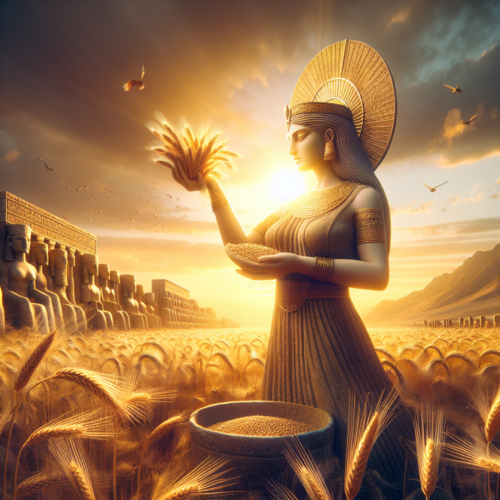Ashnan is the goddess of grain and agriculture, embodying the essence of fertility and the sustenance of civilization. She represents the cultivated fields’ bounty, ensuring the well-being and prosperity of the people. Ashnan’s presence in the mythology underscores the deep reverence and importance the Mesopotamians placed on agriculture as the foundation of their society and economy.
Ashnan is often depicted as a nurturing figure, her essence intertwined with the golden fields of barley and wheat that stretch across the Mesopotamian plains. She is the divine force that brings the crops to fruition, her blessings manifesting in the abundant harvests that feed the population. In hymns and prayers, she is celebrated for her generosity and her role in providing the basic sustenance of bread and beer, essential components of the Mesopotamian diet.

While specific iconographic representations of Ashnan are scarce, she is symbolically associated with elements of agriculture such as sheaves of grain or the fertile earth. Imagery that evokes the richness of the harvest and the flourishing of the fields would be emblematic of her divine influence. In some depictions, she may be shown holding or surrounded by stalks of grain, emphasizing her connection to the earth’s bounty.
Ashnan’s mythological narrative is most notably captured in the myth involving her creation alongside Lahar, the god of cattle, to provide the gods with food and clothes. Their productivity leads to an argument between them.
This myth highlights Ashnan’s integral role in the divine scheme to sustain the gods and, by extension, humanity, underscoring the interconnectedness of agriculture, livestock, and the well-being of the cosmos.
